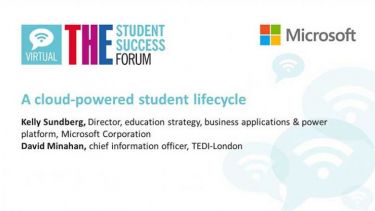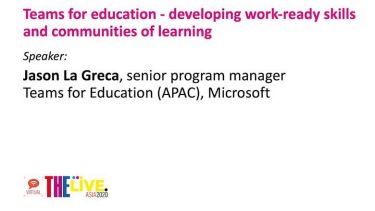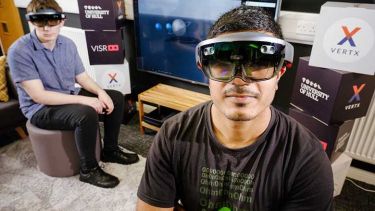To be truly student-centred, higher education must first understand its student population
The value of higher education institutions is in the teaching they offer, the graduates they produce, and the critical thinking they inspire, rather than the methods they use to create that value, according to Rob Curtin, director of worldwide higher education at Microsoft. Speaking during a THE World Academic Summit discussion, hosted by THE in partnership with Microsoft, Curtin explained: “The core questions when we think about our place are, ‘how do we add value and to whom do we add value’.”
The Covid pandemic has changed the way universities and students approach learning, with many adopting remote instruction as institutions closed their doors in 2020. “The pandemic was a massive accelerant for change,” Curtin said.
This newfound agility and need for empathy towards students and staff have bolstered the idea of student-centred higher education. Curtin offered two definitions: an institutional and an ecosystem definition. The institutional definition is often analogous to personalised learning and whether “we are thinking with empathy from your viewpoint or we are actually thinking about operational efficiency from our viewpoint”, he explained.
The ecosystem definition involves looking at a student’s journey from school right through to lifelong learning, involving reskilling and career advancement. Curtin likened such an ecosystem to the ones created for healthcare, in which governments, workforce boards or collaborative consortia hold people’s records to support them throughout their lives.
Most institutions’ student information systems and technology were purchased about 20 years ago when the goal of the mainframe was purely moving information out of filing cabinets and putting it into databases. “This concept of multimodal was never designed to be part of the original software experience,” he said.
But to put students at the heart of higher education will require more than just introducing new technologies. Institutions need to focus on the value they create and who they are serving. To develop a student-centred process, institutions must know the different personas of their students. “You’re now looking at the engagement model for an employed worker or someone who needs reskilling, and that is very different from the engagement model for a first-time, full-time freshman,” Curtin said.
While teaching methods may change, institutions’ strategies need to focus on the value they offer. “We need an education strategy today that is not about applying technology to what we’re comfortable with, but rather it is about what is our new model for engagement. Who are we serving, how are we serving them and what does that look like?” Curtin concluded.
Watch the session on demand above or on the THE Connect YouTube channel.
Find out more about Microsoft and higher education.









